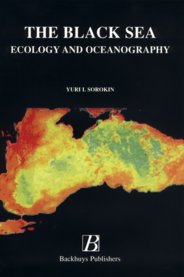

The Black Sea is the largest
of the World meromictic basins – those bodies of water characterized by
a permanent halocline. In meromictic basins close to sea coasts, the halocline
may form under the influence of saline sea water, which penetrates via shallow
inlets or is seeping through the sand bars. Being more dense, this water fills
deeper layers. This is the origin of the Black Sea and of numerous small meromictic
estuarine lakes, lagoons, and fjords. The Black Sea is the largest meromictic
basin of this type and contains the greatest amount of anoxic water on the Planet.
The presence of its anoxic zone has had a drastic influence on its chemical
conditions and biota. The formation of its quasi-permanent chemocline is the
consequence of a constant inflow of saline Mediterranean water from the Sea
of Marmara through the Bosporus strait. These waters are spreading within the
deep strata of its basin, while the salinity in its upper layer is freshened
by river water and by inflow from the Sea of Azov... The specific features of
the Black Sea and its great economic importance stimulated intensive investigations,
which began in the late 18th century. By now it is one of the best studied enclosed
seas. In spite of the existence of a voluminous literature, and maybe because
of it, there is a growing need for a modern monographic book, which opens the
possibility to navigate around the enormous scientific material and its controversies.
Over 90% has been published in Russian or Romanian languages, practically inaccessible
to the Western scientific communities. This monograph presents basic scientific
knowledge on all aspects of the ecological state of the Basin, united within
a holistic analysis of its ecosystem. The goal of the present book is to cover
the demand for a modern monographic work of all knowledge about the Black Sea.
The author also wants to demonstrate in this book the power of technological
humanity, able to change catastrophically the ecosystem of a whole deep sea
in only a couple of decades.
Introduction
Acknowledgements
Part I:
Physical Oceanography
1. Morphometry, geology,
meteorology, water balance.
2. Physical oceanography.
Part II:
Chemical Oceanography
3. Hydrochernistry.
4. Biogeochemistry of sulphur and redox processes.
5. Biogeochemistry of elements and organic matter.
Part III:
Biological Oceanography
6. Phytoplankton, chlorophyll an pelagic primary production.
7. Bacteria.
8. Zooplankton.
9. Benthic communities.
10. Fish and fishery.
11. Anthropic ecology.
12. References.